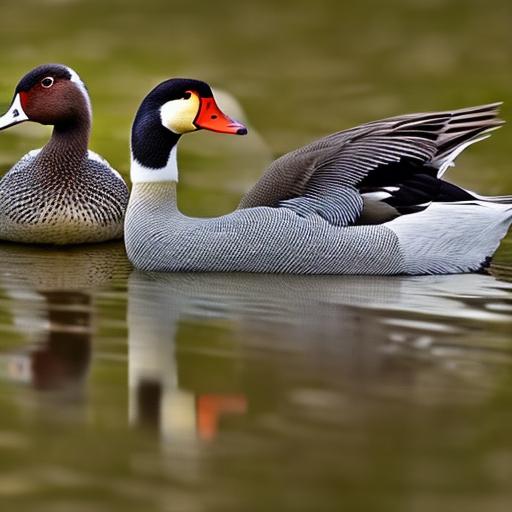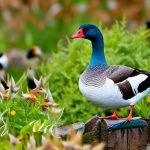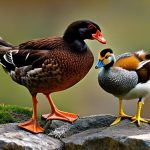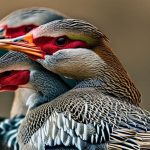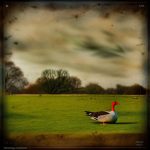Keeping different types of poultry together can be a rewarding and efficient way to raise birds on your farm or homestead. One popular combination is keeping pilgrim geese with ducks. Pilgrim geese are known for their calm and friendly nature, while ducks are known for their hardiness and ability to forage. When kept together, these two species can complement each other and create a harmonious flock.
There are several benefits to keeping pilgrim geese with ducks. Firstly, they can provide companionship for each other. Geese and ducks are social animals and thrive in the company of others. By keeping them together, you are providing them with the opportunity to form bonds and engage in natural behaviors.
Additionally, geese and ducks have different foraging habits. Geese are grazers and prefer to eat grass and other vegetation, while ducks are dabblers and enjoy eating insects and aquatic plants. By combining these two species, you can maximize the use of your land and ensure that all available food sources are utilized.
Key Takeaways
- Keeping pilgrim geese with ducks can be a rewarding and enjoyable experience.
- Pilgrim geese have unique characteristics that make them great companions for ducks.
- Choosing the right breed of ducks is important for successful cohabitation with pilgrim geese.
- Providing a suitable living environment and proper nutrition is crucial for the health and well-being of both species.
- Managing social dynamics and preventing disease are important considerations for keeping pilgrim geese and ducks together.
Understanding the unique characteristics of pilgrim geese
Pilgrim geese have a rich history and origin. They were first bred in the United States in the early 20th century by a man named Oscar Grow. The breed was developed from a mix of European geese brought over by early settlers. Pilgrim geese were named after the Pilgrims who settled in Plymouth, Massachusetts, as they were believed to have been kept by them.
Physically, pilgrim geese are medium-sized birds with a distinctive appearance. They have a white body with gray markings on their head and neck. Unlike other breeds of geese, both male and female pilgrim geese have similar markings, making it difficult to distinguish between the sexes based on appearance alone.
In terms of behavior, pilgrim geese are known for their calm and friendly nature. They are generally docile and can be easily handled and trained. They are also good foragers and can thrive on a diet of grass and other vegetation.
Choosing the right breed of ducks to keep with pilgrim geese
When choosing a breed of ducks to keep with pilgrim geese, it is important to consider compatibility between the two species. While geese and ducks can generally coexist peacefully, some breeds of ducks may be more compatible with geese than others.
One popular duck breed to keep with pilgrim geese is the Pekin duck. Pekin ducks are known for their hardiness and adaptability, making them a good choice for mixed flocks. They are also similar in size to pilgrim geese, which helps to maintain a balanced flock.
Another popular duck breed to keep with pilgrim geese is the Khaki Campbell duck. Khaki Campbells are excellent foragers and can thrive in a variety of environments. They are also known for their high egg production, which can be beneficial if you are looking to raise ducks for eggs.
Providing a suitable living environment for pilgrim geese and ducks
When keeping pilgrim geese and ducks together, it is important to provide them with a suitable living environment. This includes appropriate housing and outdoor space.
For housing, both geese and ducks require shelter from the elements and protection from predators. A sturdy and secure coop or shed should be provided, with enough space for all birds to roost comfortably. It is also important to provide nesting boxes for ducks if you are planning on breeding them.
In terms of outdoor space, both geese and ducks require access to water for bathing and swimming. A pond or shallow pool should be provided for this purpose. Additionally, both species require access to grassy areas for grazing and foraging. Fencing should be used to protect the birds from predators and to prevent them from wandering off.
Feeding and nutrition requirements for pilgrim geese and ducks
Pilgrim geese and ducks have different feeding and nutrition requirements, but can be fed a similar diet. Both species require a balanced diet that includes a mix of grains, greens, and protein.
For geese, a diet of grass and other vegetation is ideal. They can graze on pasture or be provided with fresh grass clippings. Additionally, geese should be fed a commercial poultry feed that is specifically formulated for waterfowl.
Ducks, on the other hand, require a diet that includes both vegetation and protein. They can be fed a commercial poultry feed that is specifically formulated for ducks, as well as fresh greens and insects. It is important to provide ducks with access to water for drinking and bathing, as this helps to aid digestion.
Supplemental feeding and treats can also be provided to both geese and ducks. This can include fruits, vegetables, and kitchen scraps. However, it is important to avoid feeding them anything that is toxic or harmful to their health.
Managing the social dynamics between pilgrim geese and ducks
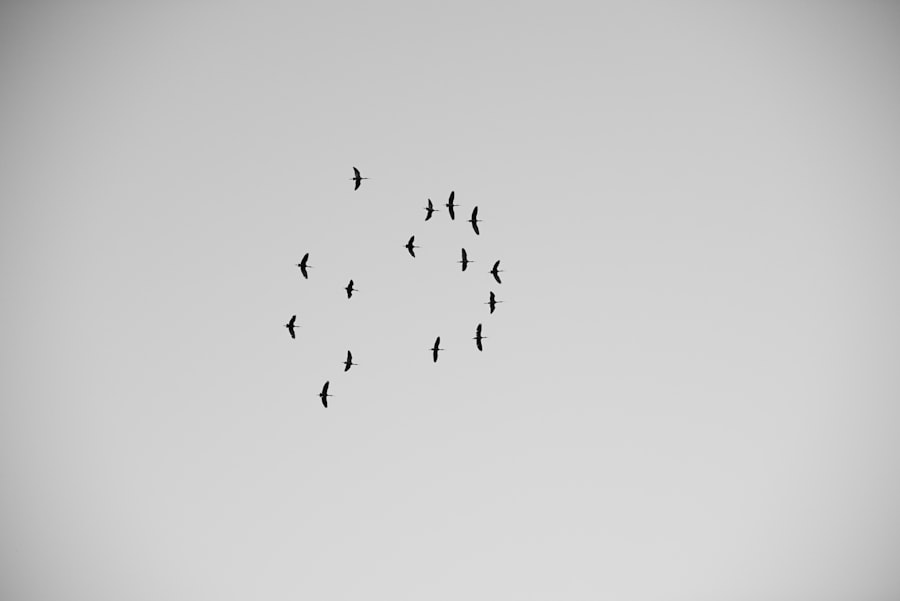
When keeping pilgrim geese with ducks, it is important to understand the social dynamics between the two species. Geese have a natural pecking order, with dominant birds asserting their authority over subordinate birds. Ducks also have a pecking order, but it may not be as pronounced as in geese.
To manage the social dynamics between pilgrim geese and ducks, it is important to provide enough space for all birds to establish their own territories. This can help to minimize aggression and ensure that all birds have access to food and water.
When introducing new birds to the flock, it is important to do so gradually and under supervision. This allows the birds to establish a hierarchy without causing undue stress or harm. It may also be helpful to provide multiple feeding and watering stations to prevent competition and aggression.
Health and disease prevention for pilgrim geese and ducks
Keeping pilgrim geese and ducks healthy is essential for their well-being and productivity. Like all poultry, geese and ducks are susceptible to a range of health issues and diseases. It is important to be proactive in preventing these issues through good management practices and vaccinations.
Common health issues in poultry include respiratory infections, parasites, and nutritional deficiencies. Regular health checks should be conducted to monitor the overall health of the flock. Any signs of illness or distress should be addressed promptly, and a veterinarian should be consulted if necessary.
Preventative measures can also be taken to minimize the risk of disease. This includes practicing good biosecurity, such as keeping the coop clean and disinfecting equipment regularly. Vaccinations can also be administered to protect against common diseases, such as avian influenza and duck viral enteritis.
Egg production and breeding considerations for pilgrim geese and ducks
Pilgrim geese and ducks can both be raised for egg production, although their egg laying habits differ. Geese are seasonal layers, meaning they only lay eggs during certain times of the year. Ducks, on the other hand, are more prolific layers and can lay eggs year-round.
To encourage egg production in geese, it is important to provide them with a suitable nesting area. This can include a secluded spot in the coop or a separate nesting box. Geese may also require additional calcium in their diet to support eggshell formation.
Breeding pilgrim geese and ducks can be a rewarding experience. To breed geese, it is important to provide them with a suitable mate and a safe nesting area. Geese are monogamous and will form lifelong bonds with their mates. Ducks, on the other hand, are more promiscuous and will mate with multiple partners.
Incubation of eggs can be done naturally by the female, or artificially using an incubator. Both methods have their advantages and disadvantages, and it is important to choose the method that works best for you and your flock.
Harvesting and utilizing products from pilgrim geese and ducks
Pilgrim geese and ducks can provide a range of products that can be utilized on the farm or homestead. This includes eggs, meat, and feathers.
Eggs from both geese and ducks can be used for consumption or for hatching. They are nutritious and can be used in a variety of recipes. Geese eggs are larger than duck eggs and have a rich flavor, while duck eggs are smaller and have a stronger taste.
Meat from geese and ducks is also highly prized. Geese meat is known for its rich flavor and can be used in a variety of dishes. Duck meat is lean and flavorful, and is often used in Asian cuisine.
Feathers from geese and ducks can be used for crafts, such as making pillows or quilts. They can also be used for fly tying or other fishing purposes.
When harvesting products from pilgrim geese and ducks, it is important to do so in a sustainable manner. This includes only harvesting what is needed, and using all parts of the bird to minimize waste.
Conclusion and tips for successful cohabitation of pilgrim geese and ducks
Keeping pilgrim geese with ducks can be a rewarding experience that provides numerous benefits. By understanding the unique characteristics of pilgrim geese, choosing the right breed of ducks, providing a suitable living environment, managing social dynamics, ensuring good health, encouraging egg production and breeding, and utilizing products in a sustainable manner, you can create a happy and healthy flock.
In conclusion, keeping pilgrim geese with ducks is a great way to maximize the use of your land and create a harmonious flock. By understanding the unique characteristics of pilgrim geese, choosing the right breed of ducks, providing a suitable living environment, managing social dynamics, ensuring good health, encouraging egg production and breeding, and utilizing products in a sustainable manner, you can create a successful and thriving flock. So why not give it a try and enjoy the benefits of keeping these two species together?
If you’re interested in keeping pilgrim geese with ducks, you may also want to check out this informative article on Poultry Wizard about creating a trampoline in your chicken coop. This unique addition can provide your feathered friends with extra exercise and entertainment. To learn more about this innovative idea, click here.
FAQs
What are pilgrim geese?
Pilgrim geese are a domestic breed of geese that are known for their calm and friendly temperament. They are medium-sized birds with distinctive black and white markings.
Can pilgrim geese be kept with ducks?
Yes, pilgrim geese can be kept with ducks. They are both waterfowl and have similar needs in terms of housing, feeding, and care.
What are the benefits of keeping pilgrim geese with ducks?
Keeping pilgrim geese with ducks can provide companionship for both species and can help to reduce stress and aggression. They can also share the same living space and resources, making it easier to care for them.
What should be considered when keeping pilgrim geese with ducks?
When keeping pilgrim geese with ducks, it is important to ensure that they have enough space to move around and access to water for swimming and bathing. It is also important to provide them with appropriate food and shelter, and to monitor their behavior to ensure that they are getting along well.
What are some potential challenges of keeping pilgrim geese with ducks?
One potential challenge of keeping pilgrim geese with ducks is that geese can be more aggressive than ducks, especially during breeding season. It is important to monitor their behavior and separate them if necessary. Additionally, geese may require more space and resources than ducks, so it is important to ensure that they have enough room to thrive.
Meet Walter, the feathered-friend fanatic of Florida! Nestled in the sunshine state, Walter struts through life with his feathered companions, clucking his way to happiness. With a coop that’s fancier than a five-star hotel, he’s the Don Juan of the chicken world. When he’s not teaching his hens to do the cha-cha, you’ll find him in a heated debate with his prized rooster, Sir Clucks-a-Lot. Walter’s poultry passion is no yolk; he’s the sunny-side-up guy you never knew you needed in your flock of friends!

